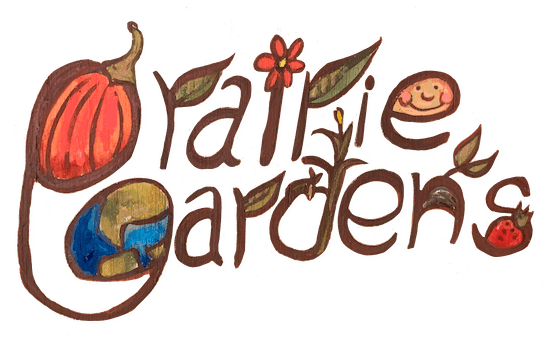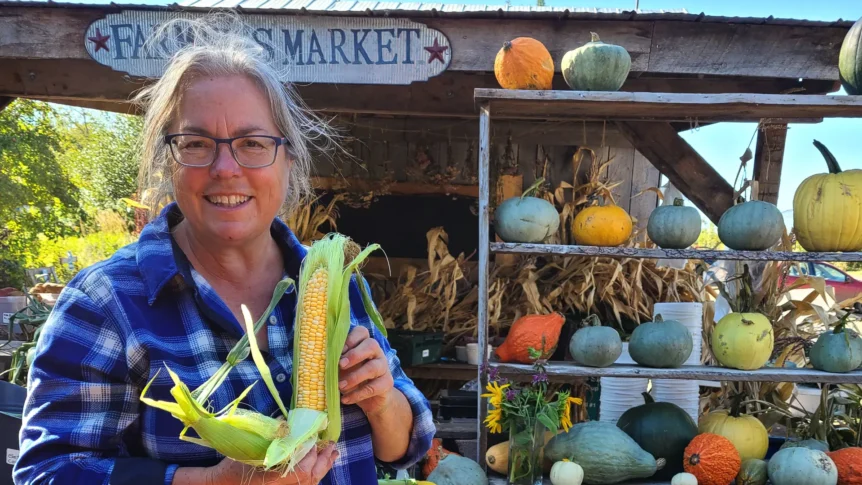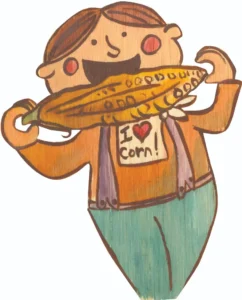 Sweet corn (Zea mays) has been a staple at Prairie Gardens since 1988. Although corn was domesticated for over 10,000 years, it is only in the last 20 years that northern Alberta market gardeners, and home gardeners have been able grow and harvest sweet corn from their gardens. The garden corn that was available when I helped my Mum in her garden in southern Alberta was a special summer treat when I was young. Even though the fresh corn back then was amazing for the time, there is no comparison to the types of sweet corn we now grow at Prairie Gardens today.
Sweet corn (Zea mays) has been a staple at Prairie Gardens since 1988. Although corn was domesticated for over 10,000 years, it is only in the last 20 years that northern Alberta market gardeners, and home gardeners have been able grow and harvest sweet corn from their gardens. The garden corn that was available when I helped my Mum in her garden in southern Alberta was a special summer treat when I was young. Even though the fresh corn back then was amazing for the time, there is no comparison to the types of sweet corn we now grow at Prairie Gardens today.
In the past, the corn that we grew was called a ‘Standard’ type or ‘Normal Sugary (su)’. The sugar in the kernels would convert to starch at a rate of 50% every 24 hours. The sweetness in the cobs would disappear one day after harvest and the texture of the kernels could be dull and starchy. If you let the corn cob get overripe, the kernels were hard and dry. If you picked it underripe and white, it tasted like green grass. Happily, in the past 20 years, corn breeding has come a long way. There are now many types available that will mature and taste great in the Edmonton area climate. There are several classes of corn that flourish here!
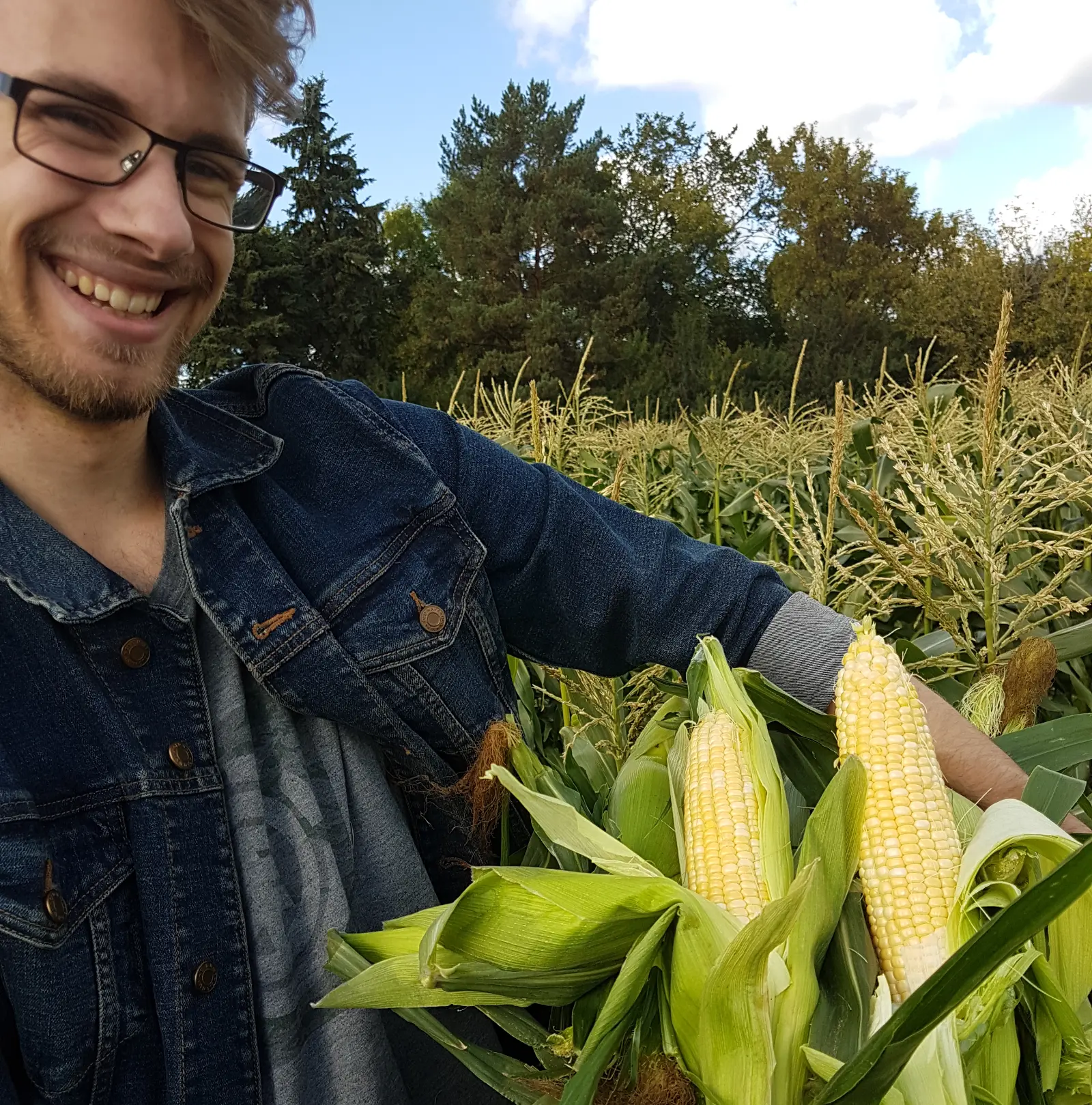
Corn-fused by all the nomenclature? Here is Corn 101 simplified:
su aka Standard: Traditional varieties that started the corn revolution. They taste best when the pot is boiling on the stove before you pick it.
Se aka Sugar Enhanced and sy aka Synergistic: The next generations after su has an increased level of sugars, and a very creamy taste. Breeders have enhanced the se class with additional sugary kernels and created a new class sy Synergistic. These varieties are branded as Triple Sweet. They grow in cold soils, and have a medium sized kernel. Isolation is required for kernel color but not for taste. Bodacious is a good example of one we grow at Prairie Gardens.
Sh2 aka Supersweet and ShA aka Augmented Supersweet: A huge leap above se for sugars. These varieties have a long season of picking in the corn patch, and the ability to stay sweet in your fridge for an extended period of time, because the sugars convert to starch very slowly. Breeders call these Xtra-Tender. Isolation from other types of corn is required for both kernel colour and taste. If they are not kept 300M apart, the sugar will revert to starch and produce a low-quality cow corn. We have had success with Bolt and Tempo.
The improvements in corn breeding are the result of hybridization, or cross breeding different selections of corn varieties. These corn varieties are not genetically modified or GMO—though the terminology can be a bit confusing!
Here’s how it breaks down:
- Augmented corn typically refers to sh2 hybrids (shrunken-2 gene) that have been selectively bred to enhance sweetness, tenderness, and shelf life.
- These hybrids combine traits from sugary enhanced (se) and super sweet (sh2) types, resulting in corn that’s extra juicy and flavorful
Augmented super sweet corn—like Supersweet Signature or Reserve are bred through traditional hybridization and are GMO-free.
GMO means that genes from other organisms (not corn) are spliced into the DNA sequence. GMO corn is sometimes grown by very large-scale commercial production facilities, (aka Roundup-ready Corn), but is not typically grown by local market gardens with small corn patches.
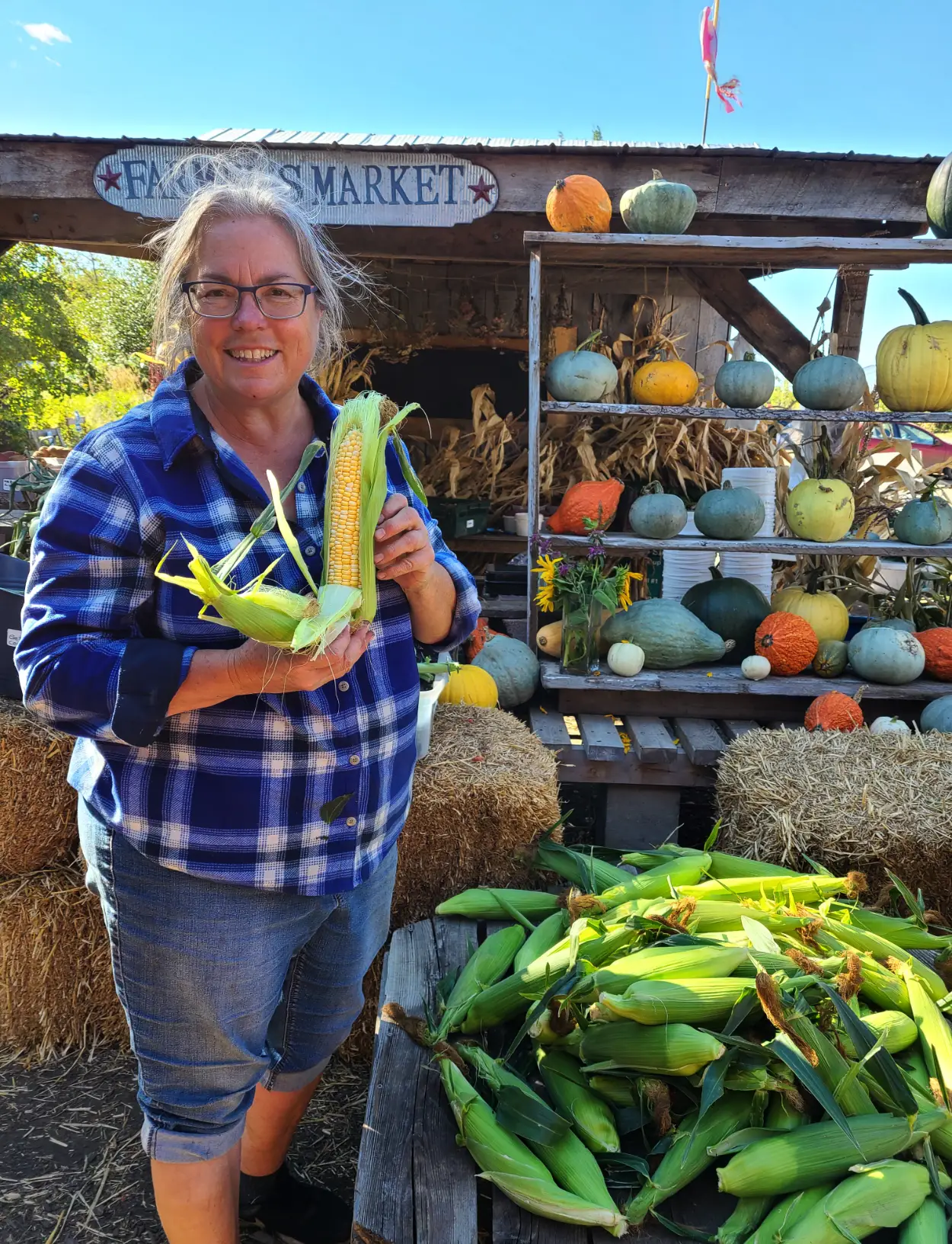
Corn Fest at Prairie Gardens with Tam Andersen
If you are keen to try growing your own corn, select varieties for the Edmonton region with maturity dates of less than 75 days. Corn is a warm-season crop and should be seeded when the soil has warmed up in spring to at least 15 C (third or fourth week in May). Early planting into cold soil may result in seed rot.
Corn does not like to have its roots disturbed; avoid transplanting. Sweet corn plants love heat, moisture and fertile soil. Corn is cross-pollinated by the wind. Corn plants should always be planted in rows side by side. A single row of corn will not pollinate properly.
Corn plants produce the male flower – or pollen in tassels at the top of the plant. The silks in the cob are each connected to one kernel in the cob. The pollen must travel down the silk to each kernel for the kernels to develop. Missing kernels in a cob indicate that there was poor pollination. If you are growing more than one type of sweet corn, separate the two different types by at least six to eight metres. Cross-pollination between two different types of corn will negatively affect cob quality.
Corn has few insect issues; however, with the increase in the amount of field corn being grown for livestock, corn earworm has become an issue. Corn earworm is not a worm but rather a caterpillar. Moths flying in from the United States lay their eggs on the new leaves and silks in August. The eggs hatch out in a few days and the ‘worms’ burrow into the tip of the cob. Usually, not more than one-third of the cob is affected. There is no effective spray for this pest. Simply cut off the chewed part of the cob, and the remainder of the cob is completely edible.
How do you know when your corn cob is ready for harvest?
The silks on the cob should have dried up and the tip of the cob should feel blunt to the touch, rather than tapered. If you are still not sure, peel back a bit of the husk on the tip to sneak a peek to see if the kernels look plump and ready. Remember that sweet corn now comes in yellow, bicolour and even white kernels, so check for mature kernel colour as you harvest.
